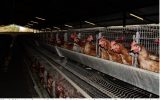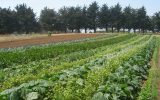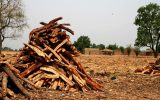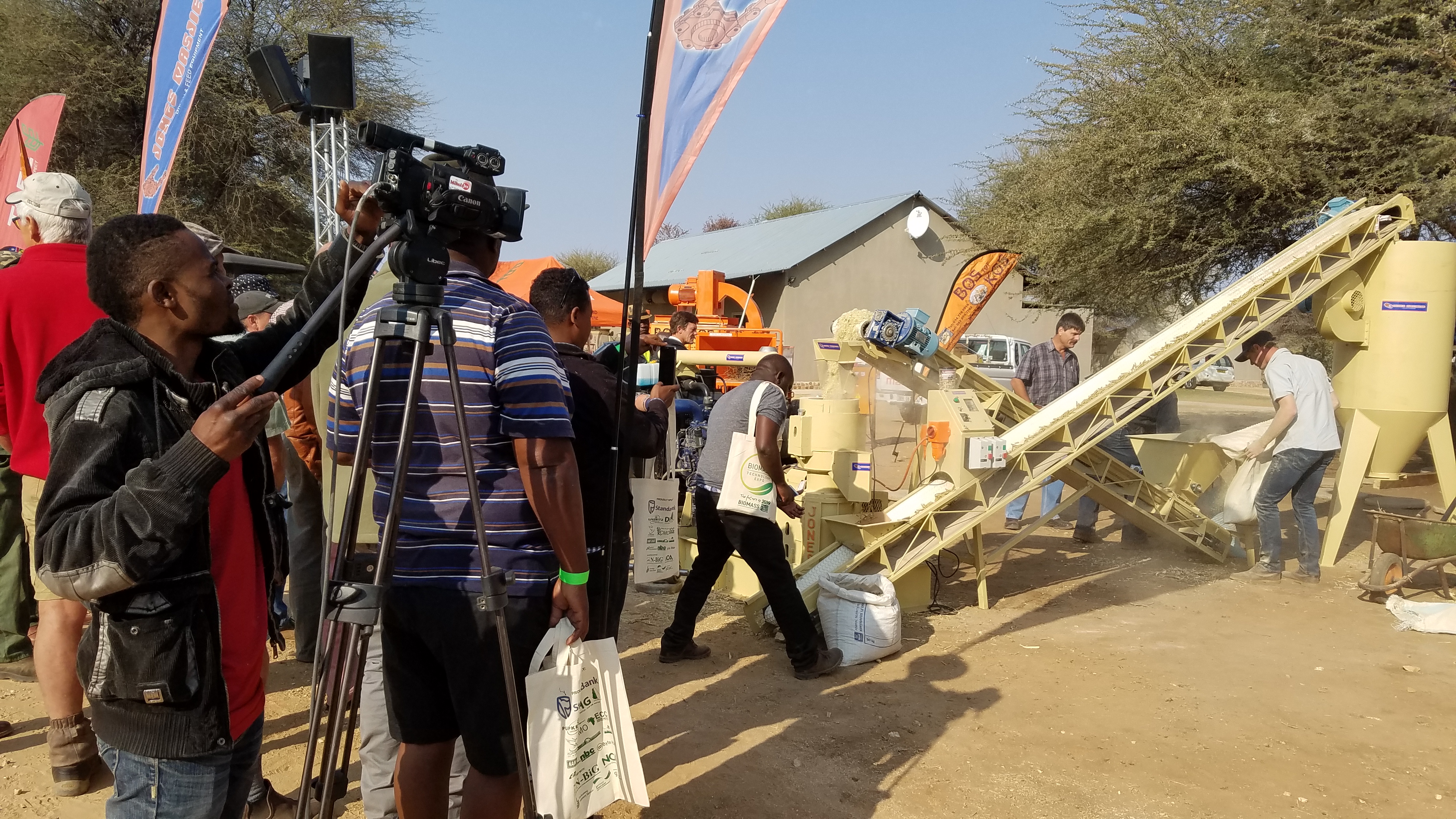Otjiwa, 9 August 2019. Biomass moves Namibia. The Biomass Technology Expo (BTE) at Otjiwa near Otjiwarongo on Friday 9 August turned out to be biggest biomass day Namibia has ever seen. More than 120 exhibitors showed their new technology, reached out to potential customers and exchanged ideas. With 1,400 visitors the BTE claims its place among Namibia’s most vibrant business shows.
Ned Sibeya, Deputy Chief National Planning Commission, encouraged visitors in his opening speech: “The event links buyers to sellers, experts to laymen, and Namibia to the rest of the world. BTE develops new ways of thinking about our vast biomass resource and how it can be fully explored. The technology at the heart of this expo provides the means to unlock the true value of this resource. We are on the right path to something meaningful.”
Many Namibians are already realising the biomass business opportunity. Consequently, established companies like Hochland Tractors, Ombengu Energy, John Deere Otjiwarongo, Pupkewitz, Tafe and others exhibited at the expo. But biomass also offers opportunities for local small and medium enterprises. Epafras Kati, who is based in Mariental and Windhoek, trades in safety equipment. An SME tent at the expo offered him the opportunity to reach out to potential clients.
“I believe this sector will grow significantly over the next years,” Vetumbuavi Mungunda, CEO of Standard Bank Namibia, explained. The bank is a gold sponsor of the event. “Our engagement in the biomass sector started with our interest in improving rangeland and productivity of farming communities. As 60 to 70 per cent of Namibians depend on agriculture, biomass is an opportunity to reduce rural poverty. Diversification of the sector helps us to deal with drought and create additional income for farmers and for our country as a whole.”
The day started off with the 4th Annual General Meeting of the Namibia Charcoal Association. Charcoal production is booming and the sector organisation is committed to growing the industry. A new good practices booklet was launched with guidelines covering harvesting, production, aftercare, health and safety measures and more. “It was a day full of good news”, says Michael Degé, NCA manager. “We are ready to upscale considerably: Werner Berg from DHG, who exports Namibian charcoal to Germany, will increase production capacity from 18,000 to 45,000 tonnes – starting immediately. In the communal areas, NCA will launch pilot projects together with the Directorate of Forestry and the De-bushing Advisory Service to foster charcoal production there.”
The NCA also commended the Forest Stewardship Council representative, Manushka Moodley, for the excellent work she has done in Namibia. “The Namibian FSC standard is formalised and that is an enormous milestone for our country. The guidelines are now specifically adapted to the Namibian bush and environment. This will make it much easier for farmers to achieve FSC certification,” Michael Degé explains.
The BTE was organised by the Namibia Biomass Industry Group. “We are very happy with the massive turnout. Namibians are definitely realising the biomass opportunity. We were somewhat surprised by the huge international interest but that, of course, shows the great business potential Namibian biomass has to offer,” said Colin Lindeque, General Manager of NBIG.
Exhibitors travelled thousands of kilometres to Otjiwa – from South Africa, but also from Germany, Austria, Denmark, the UK and the USA. A number of machines were shown in Namibia for the first time ever, including a Bandit Arjes Impacter. “It is a slow speed shredder which breaks wood into pieces that can be used for charcoal making,” Barend van der Westhuizen from Africa Biomass explains. The company also brought an Agrifeed machine up from South Africa. “Bush to feed is the way to go. A machine like this can substantially upscale operations. It has a throughput of 3 to 7 tonnes and produces roughage ready for feeding.”
Matthias von Senfft of Spanner Re2 travelled from Germany to Otjiwa to introduce a CHP, a Combined Heat and Power system. Biomass can be used to produce electricity and heat or cooling. A boiler like this is ideal for medium scale industries, large farms or lodges. “I am very impressed with the event and the informed audience. It was great networking and a lot of fun!”
Visitors could also explore Namibian initiatives that demonstrate the “new ways of thinking about our vast biomass resource” which Ned Sibeya of NPC called for. On a larger scale this would be a Biomass Industrial Hub which locates a number of different production processes and companies at one location. While using woodchips as input, the production processes would be linked: Excess heat of one process is used as input for the next. The project is initiated by the GIZ Bush Control and Biomass Utilisation project and a Namibian delegation will travel to Germany in September to explore implementation options.
Innovation, however, can also happen on a smaller scale. This was shown at the BTE by Doré and Johannes Kriel. The couple are producing charcoal on their farm outside of Outjo. “We wanted to diversify. We did some research and were inspired by traditional Namibian practices: The Khoi-San, for example, use charcoal as face cosmetics and for brushing teeth.” The Kriels now produce a range of “activated charcoal cosmetics” such as soaps and face care. Currently, the Kriels source the activated charcoal internationally but they will be setting up a production line for this high value produce soon.




















